
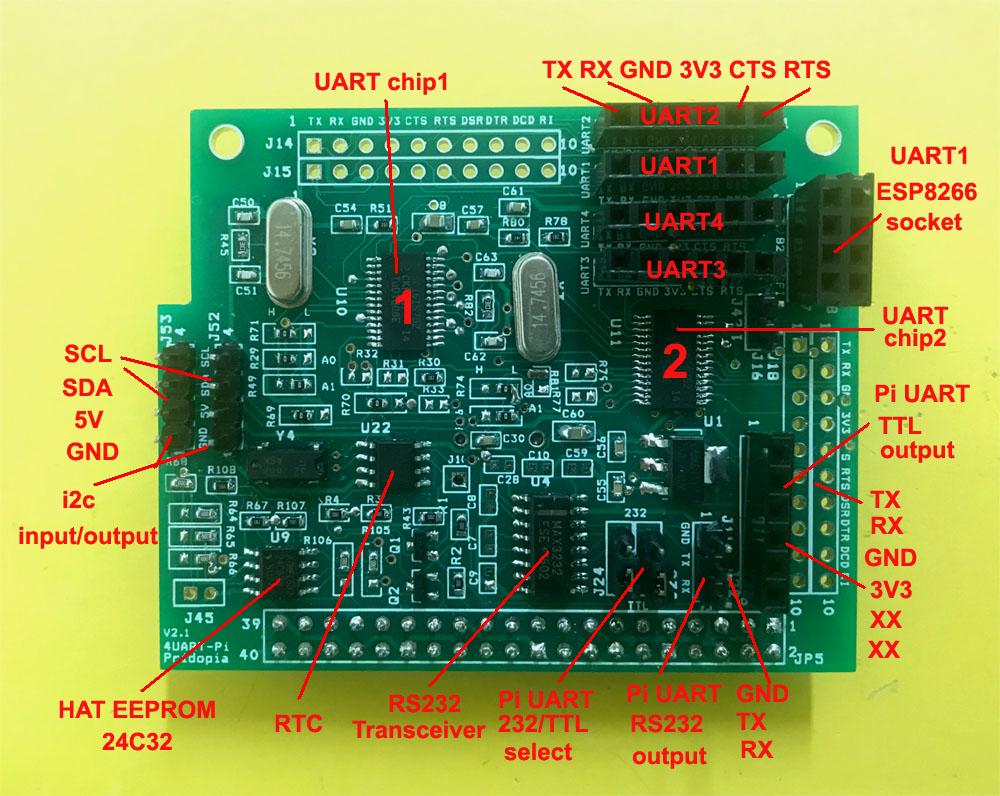
1. provide extra 4 UART TTL output `
4x UART TTL output TX,RX,GND,3V3,CTS,RTS
2. Pi UART can select TTL/232 output
Pi UART RS232 output GND, TX, RX
Pi UART TTL output TX,RX,GND,3V3,XX,XX
3. 2 set i2c signal out GND,5V,SDA,SCL for extend extra UART HAT
4. TTL UART1 support ESP8266 WiFi module socket
5. It provides an individual 3.3V power for UART & output port
6. Provide RTC & RTC backup battery socket
7. Provide HAT EEPROM for future driver program update.
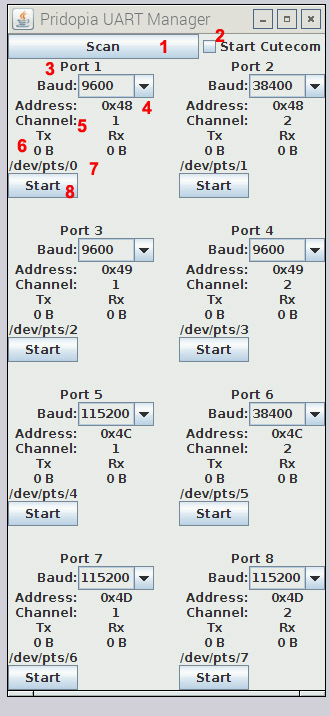
- 1. Scan: Scan for available UART devices.
- 2. Launch cutecom together when starting Serial Port.
- 3. Port number in system
- 4. Baud Rate choose
- 5.6.7. UART Port Information: Port Address 0x48,0x49, 0x4c, 0x4d
Chip Address Location, Channel Number ( 1 / 2 ), TX and RX receive counter,
and Serial port Location /dev/pts/X
- 8. Start : Start UART port
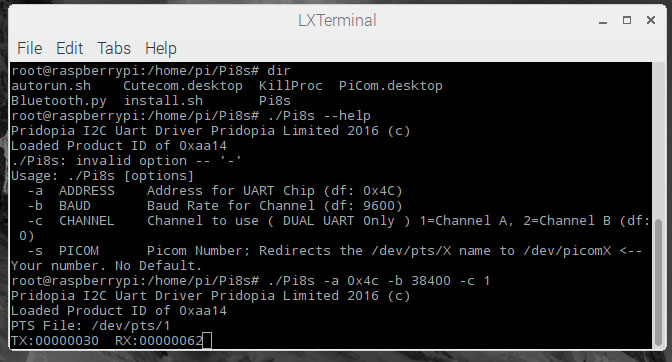
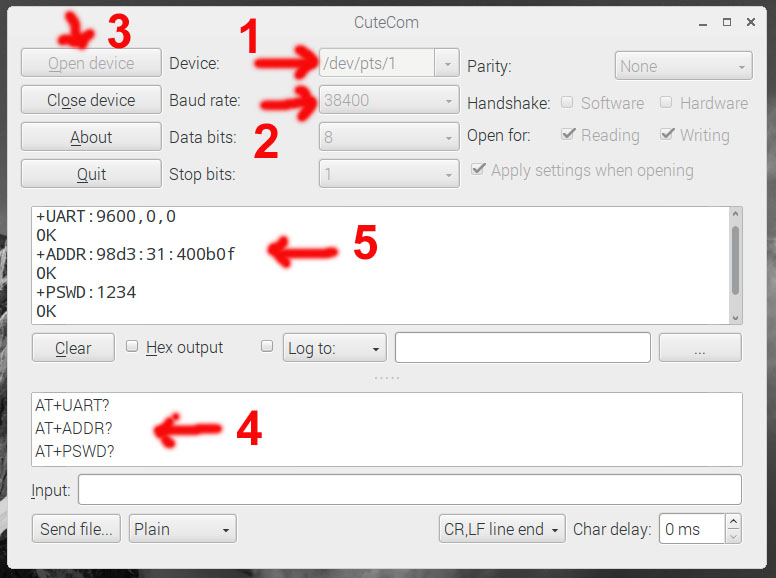
1. device -> /dev/pts/1 2 . Baud rate à 38400
3. click Open device
4. input AT command (HC-05 blutetooth module)
5. screen will show Bluetooth module response
9UART demo 8 UART ( 2x 4 UART HAT )+ 1 UART Pi
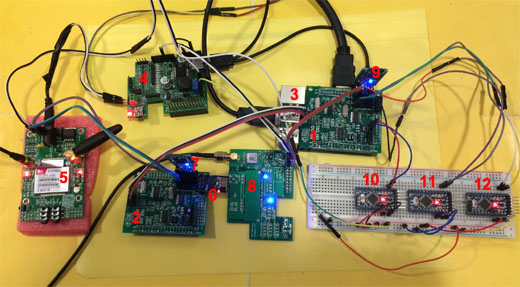
- Pi-UART-4-TTL ( 4 UART HAT )
- Pi-UART-4-TTL ( 4 UART HAT )
- Raspberry Pi 2B
- Pi-PSU ( Pridopia Pi Power Supply )
- SIM908-C EVB 1.0 GPRS+GPS Module ( 2 UART )
- ESP8266WiFi module ( 1 UART )
- Bluetooth 2.0 ( 1 UART )
- Pi-HAT-Lite GPS Module ( 1 UART )
- Bluetooth 4.0 BLE ( 1 UART )
- arduino mini Pro ( 1 UART Pi )
- arduino mini Pro ( 1 UART )
- arduino mini Pro ( 1 UART )
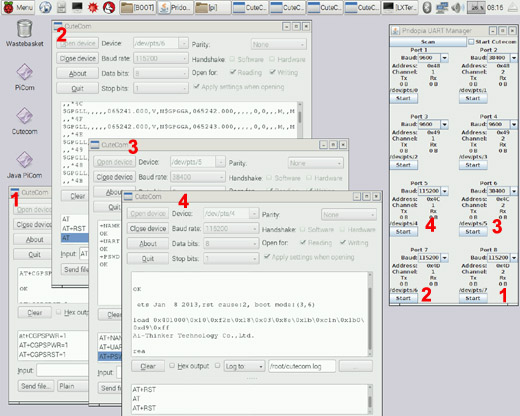
1. SIM908-C EVB 1.0 GPRS (Port 8 bps 115200 )
2. SIM908-C EVB 1.0 GPS ( Port 7 bps 115200 )
3. Bluetooth 2.0 ( Port 6 bps 38400 UART )
4. ESP8266WiFi module ( Port 5 bps 115200 )
Package Content
1x Rs-Pi 4xUART-RTC-V2 HAT board1x manual
Project Background
During development / research for a project which needs more than 1 UART Port, the common replacement for the Raspberry Pi is the "Arduino MEGA". This is because the MEGA provides 4 UART's which can be used at the same time creating a multi UART device.
When using UART on the Raspberry Pi you are very limited on how you work around this limitation, but we also know that the Pi 3B has a built in WiFi & Bluetooth module. In the Raspberry Pi 3B the Bluetooth uses the only UART which further limits the use of the Pi. Most solutions for external UART controllers come as a USB to UART converter, which takes up space and brings the design out of the Raspberry Pi's small form factor.
To counteract all the limitations of the Raspberry Pi, we have built a board which simply connects through the Pins on the Raspberry Pi as usual, but include access to extra UART's without limiting the Pi any further or without a special image.
The current board range will fit on all the Raspberry Pi's to Date ( September 2016 ), The Lite versions of the boards will fit on the Pi Zero without a problem or modification. The Boards rise less than 1cm above the original form factor.
Included is our own software which manages, controls, and watches the UART ports. The software comes as a terminal program, and GUI programs, each will report the port location for easy to use for easy integration into any project.
We use Raspbian Jessie; Version: May 2016, Release date: 27th May 2016, Kernel version: 4.4 Because we have created our own driver which manages the setup and the control of the serial ports which allows the user to apply changes on the fly, We haven't gone down the route of a kernel but instead chosen to write a Driver for the serial ports. This manages everything from setting up the ports, monitoring changes such as closing the port and reopening it etc.
What Is It?
UART HAT is Add-on board for Raspberry Pi which provides 1, 2, and 4 additional RS232/TTL serial ports with flow control which are 3.3 V compatible in addition to the original Serial Port of Raspberry PI.
What is the use of the HAT?
As we know Raspberry Pi has only one Serial Port with only 1 RX and TX pins which is primarily used for Debugging / Wired Console use. If we need to connect any serial devices to raspberry pi we have to disable the console and then we need to connect. And all with this pain we can connect only one serial device to Raspberry Pi at a time. To overcome the all these problems we have developed the UART HAT which helps to Connect multiple serial devices such as GPS, GSM, Bluetooth 2.0/4.0 module, Arduino Pro Mini, Thermal Printers, and anything else that requires a serial port connection.
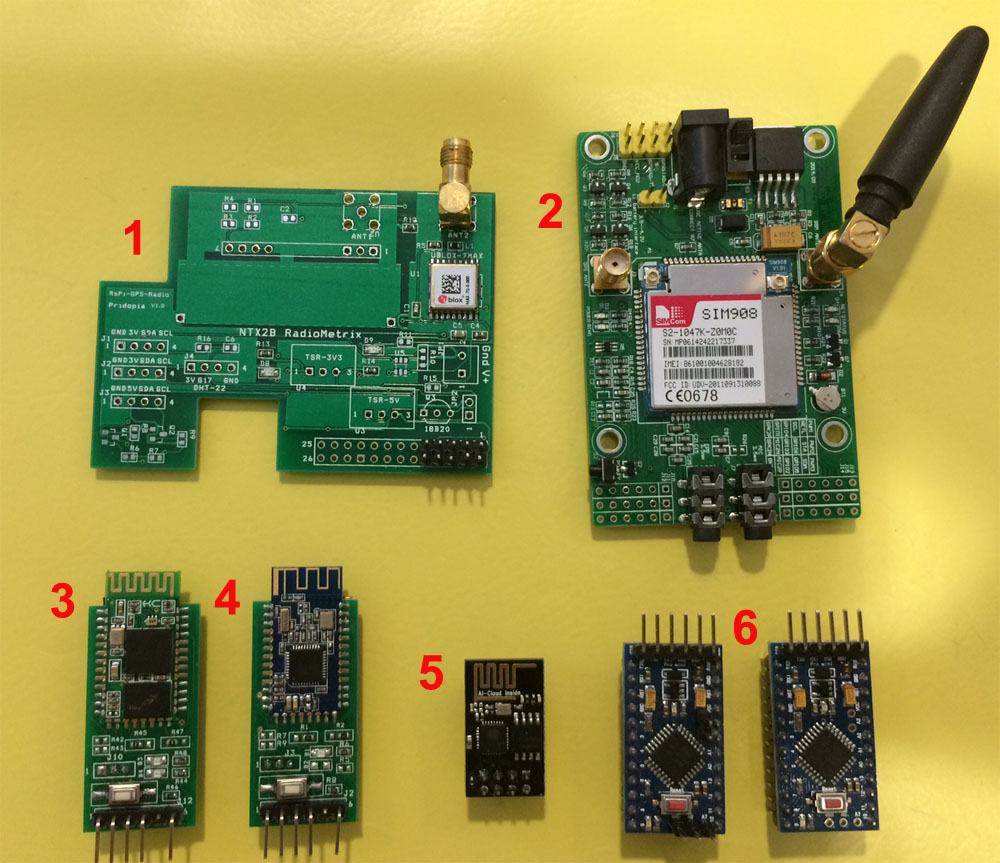
- P-HAB GPS-Lite Module
- SIM908-C EVB GPRS/GPS Module
- Bluetooth 2.0
- Bluetooth 4.0 BLE
- ESP8266 WiFi Module
- Arduino Pro Mini x2
Why not use a USB to UART?
During usual operation the keyboard and mouse will be used constantly, as well as a WiFi USB Adapter, and/or a USB Flash storage device for transferring projects back and forth. With this it leaves you with no spare USB slots or 1 USB slot at best. This limits you to just another USB to UART port, which makes you use /dev/ttyUSBx where x can be any number. In our software we assign an ID number also called our PiCom number. in a 4 port UART it goes from 1 to 4. You can then check /dev/picom1 /picom2 etc. and you will receive the pts number for easy development / usage. Or using our GUI its just one click away from starting up and being able to instantly communicate.
Along with these positives, you can load up to 4 different UART's at the same time. Our Aim We at Pridopia want to receive more feedback on how we can improve / update our software & hardware to meet the requirements of our customer base and improve the way you use the UART-Pi. What you get: The board is already sold assembled and ready to use.
The UART-Pi System will work with all the Raspberry Pi A+, B+, 2B, 3B, Pi Zero
